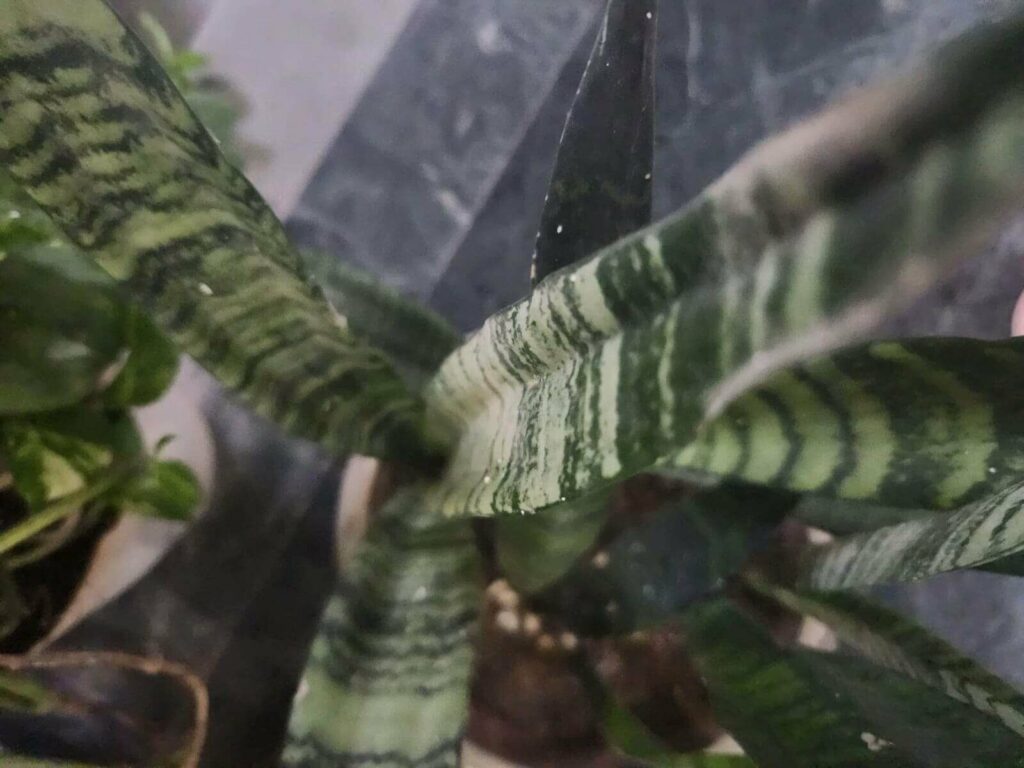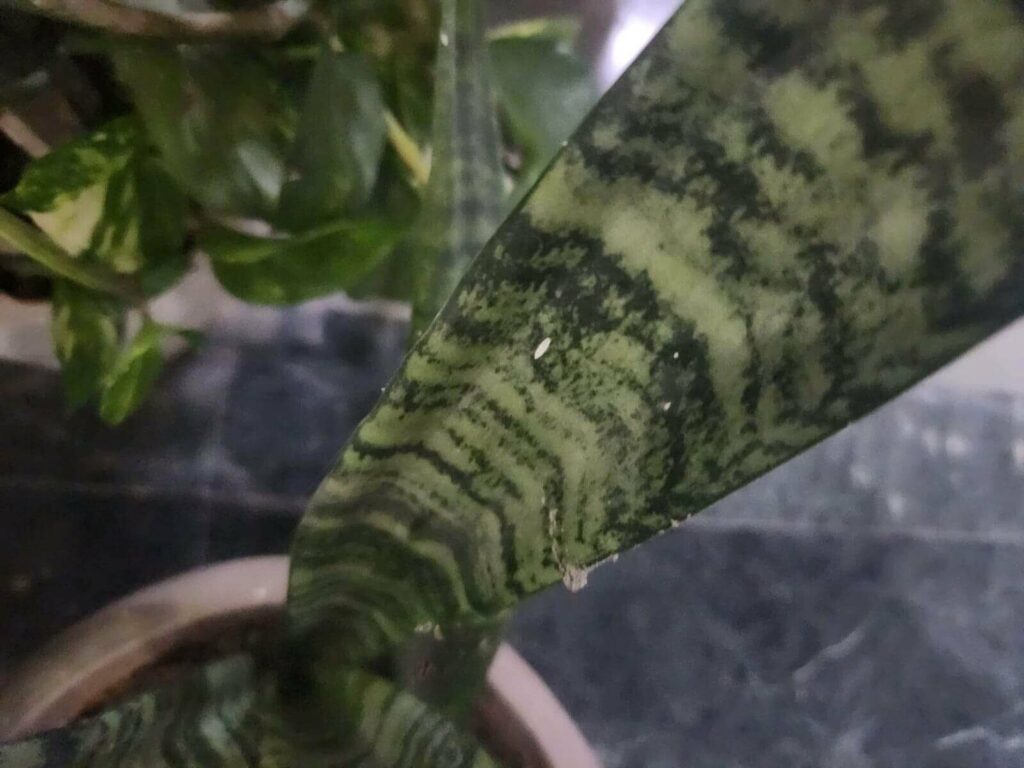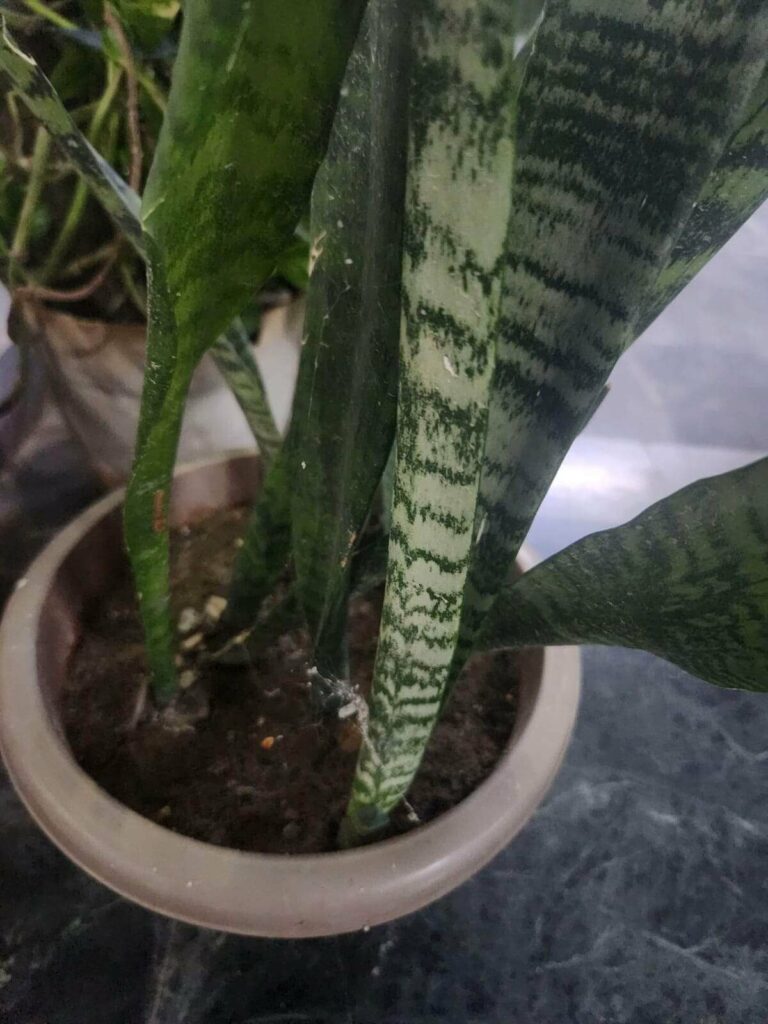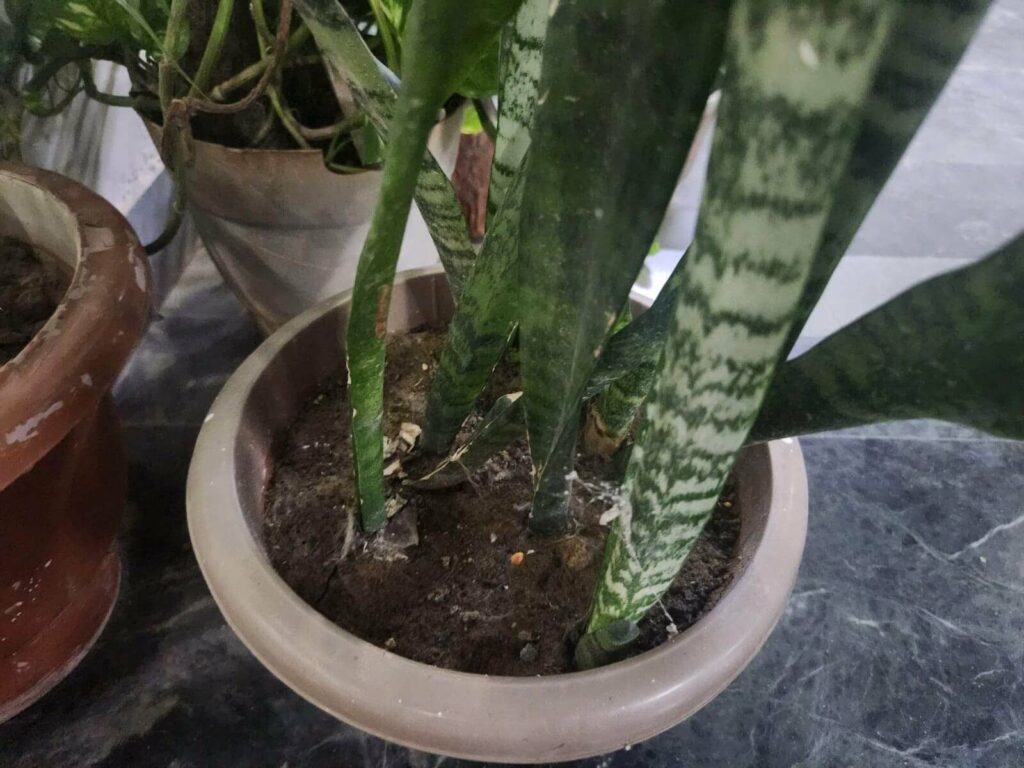 Your much-adored snake plant is naturally resistant to pests and insects because it neither bears fruit nor has any sweet aroma. Additionally, the houseplant has a specific insecticidal substance that keeps most insects and pests away. However, the natural chemical present inside the indoor plant fails to show its effect against some particular bugs and insects, including spiders, fungi, mealybugs, scales, whiteflies, aphids, etc. But there are ways by which you can keep your snake plant healthy and pest-free all year around. Let’s find out how!
Your much-adored snake plant is naturally resistant to pests and insects because it neither bears fruit nor has any sweet aroma. Additionally, the houseplant has a specific insecticidal substance that keeps most insects and pests away. However, the natural chemical present inside the indoor plant fails to show its effect against some particular bugs and insects, including spiders, fungi, mealybugs, scales, whiteflies, aphids, etc. But there are ways by which you can keep your snake plant healthy and pest-free all year around. Let’s find out how!
TL; DR:
Snake plants survive in harsh weather conditions and resist most pests. But waterlogging, dampness, untreated wounds, high humidity, root rot, etc., attract some specific insect and bug species like fungi, spiders, aphids, scales, whiteflies, mealybugs, etc. These bugs tend to extract the sap from the leaves of the plant directly, leading to brown spots and scarring. Gradually, the cell structure of the snake plant leaves breaks down and wilts. But if you keep your plant in bright filtered sunlight, mist the plant when it’s dry, keep the leaves clean, water, and fertilize it timely, your plant will stay pest-free. Using mild bug-repellent sprays also helps remove the bugs from the leaves.
Table of Contents
Common Bugs That May Attack Your Snake Plant

Here is a list of some common pests that might attack your snake plant to feed on its sap. We have also discussed the distressing signs your precious house plant can show when under a pest attack.
-
Scales
Scales insert a needle-like sting into the tissue of your snake plant leaves, extracting the sap. Moreover, the pest creates obstacles in the photosynthesis process by obstructing the light. As a result, your snake plant becomes dull and droopy with yellow leaves, yellowish scarring on the leaves, and discoloration. In fact, scale attacks could also lead to stunted growth and black fungus infestation.
-
Spider Mites
Spider mites are so tiny that figuring them out with bare eyes is something really tough. However, if there are silvery dots on the plant leaves, it’s a clear hint that your snake plant is in trouble. If you do not treat it immediately, your snake plant will slowly get weak and discolored. Spider mites target the stomata of the leaves, extracting the plant fluids. Consequently, your houseplant could experience discoloration, droopy or curling leaves, brown spots, scarring, and holes on leaves, eventually decay and death.
-
Whiteflies
Whiteflies are small, heart-shaped bugs that not only extract sap from your snake plant but also secrete honeydew. This, in turn, exposes your plant to several threats, including fungal infection and other pest attacks. The moth-like insect merges with leaf color, making it difficult for you to identify them. Whiteflies’ attacks can lead to the yellowing of leaves, stunted growth, and droopy plants. In fact, these annoying bugs can even carry plant viruses.
-
Aphids
Just like whiteflies, aphids also secrete honeydew, alongside sucking out the plant’s sap, which welcomes black sooty mold, endangering your snake plant. Also, it halts your plant’s photosynthesis and results in stunted growth.
Conditions That Attract Bugs In Your Snake Plant

Usually, snake plants are such plants in which pests and bugs are least interested. In case you start noticing signs of bug infestation, there must be an underlying issue in its surrounding atmosphere. Take a look at the following situations that are directly linked to bug infestation and toss out those practices right away.
- Overwatering
An overwatered snake plant is vulnerable to bugs and pests. If you keep watering your snake plant even when the potting mix is moist, your plant can undergo root rot. This could invite bugs to feed on it, and you will end up losing your houseplant. So, make sure to water your plant only when required and keep a keen eye on its pot’s drainage system.
- High Humidity
Snake plants flourish in average humidity. On the other hand, bugs thrive in moist areas. So, if you keep your indoor plant in high humidity for a long, you could unknowingly welcome pests and bugs to attack it. In order to prevent bug and pest infestation, make sure to place your snake plant in a moderately humid (40%) environment.
- Poor Ventilation
Snake plants enjoy smooth growth when they get a good airflow and aerated soil. However, if you choose to club them with other indoor plants, it could deprive your plant of getting the adequate airflow it seeks. Poor ventilation can lead to bacterial and fungal growth, along with root rot, welcoming pests, and bugs.
How Do You Get Rid Of Bugs On Snake Plants?
In case your snake plant is already infested by bugs, there are several ways to treat it, but you need to act fast.
-
Prune The Leaves And Isolate The Plant
The first step you need to perform to restore your house plant’s health is to isolate it from the other indoor plants. After that, in order to stop spreading the damage, prune down the affected leaves gently.
-
Use Plant-Based Miticides Spray
Made with natural pest-repellent elements, the organic miticides exterminate the pests without harming your plant. Spray your chosen miticides all over the plant. Sprays like Neem oil, Pyrethrum, Cinnamon oil, diluted rosemary oil, etc., work amazingly in removing bugs and mites from your plant.
Note: Before spraying any solution on your snake plant, do a patch test by spraying the solution on a particular leaf, and wait for some time to check the reaction. If everything seems normal, use it on the entire plant.
DIY Herbal Miticide For Snake Plants
If you do not have any store-bought miticide near you at that moment, worry not, as you can make it on your own with simple kitchen ingredients! All you need to do is:
- Take a teaspoon of cinnamon and one teaspoon of clove and boil them in 250 ml of water.
- Once the mixture cools down, add crushed garlic, and let it sit.
- Then strain out the solution and mix some dish soap with it.
- Finally, your homemade herbal miticide is ready!
- Add it to a spray bottle before using it.
Alternative Household Chemicals For Bug Removal
You can also opt for making some DIY insecticides to keep your snake plant pest-free.
-
Water-alcohol Solutions
Rubbing alcohol is a great solution to deter bugs and pests from your snake plant. Prepare your alcohol-water solution by mixing both in a 1:1 ratio. Then spray it on the leaves properly and rub gently. It will show quick action in exterminating the bugs.
-
Dish Soap Solvent
A homemade dishwash soap and water solution also shows effective results in this case. To prepare the mixture, you will need to add 1 teaspoon of liquid dishwashing solvent to 1 liter of water. Then spray it on the leaves, let them rest for a few minutes, and rinse the leaves again with fresh water.
When buying chemical insecticides for your house plant, check the ingredients and the instructions mentioned on the label before using them.
FAQs About Bugs On Snake Plant

How to remove bugs from snake plants?
When snake plants are deprived of sufficient light or heat, they are attacked by bugs like aphids and scale insects. To treat your pest-affected houseplant, increase the light and heat it gets. If not possible naturally, arrange artificial lights. To eliminate the bugs, use some bug sprays and neem oil on them.
Can gnats attack a snake plant?
Generally, no, snake plants never attract gnats. Well, only a few pests, like mealy bugs, aphids, scales, etc., are attracted by it in certain conditions like waterlogging, root rot, low light settings, etc.
How much light and humidity is required to keep a snake plant bug-free?
Maintaining around 40% humidity and a good 6 to 8 hours of indirect sunlight can keep your snake plant healthy and bug-free. If your home does not have these two attributes naturally, you can set up artificial lights and humidifiers.
Preventive Measures To Keep Your Snake Plant Bug-free
- Let your plant have around 6 to 8 hours of bright filtered light daily.
- Make sure the room where your snake plant is placed has around 40% humidity.
- Mist your plant only when the humidity around it is low.
- Water your house plant only if the soil mix is dry. Clean the leaves routinely in a gentle manner.
Final Words
Snake plants generally do not attract bugs and pests. However, if you notice a few numbers of scales, aphids, etc., it clearly indicates that there’s something wrong with its care regimen. Maybe it’s due to poor light and heat, overwatering, or inappropriate humidity, anything could be responsible for the pest attack. Before the pests suck all the saps from the leaves, leaving your plant lifeless, immediately arrange a recovery program for your snake plant mentioned in the write-up.
Have you ever noticed bugs on your snake plant? What tricks do you use to get rid of those pesky pests? Share with us and other fellow plant owners in the comment box below.
Reference:
Department of Primary Industries and Regional Development

From childhood, I have been extremely fascinated with plants and gardening. That has eventually led me to pursue BSc and then MSc in botany from the University of Calcutta. My deep love for plants has probably stemmed from the gorgeous terrace garden that I have seen my father nurture as long as I can remember.
